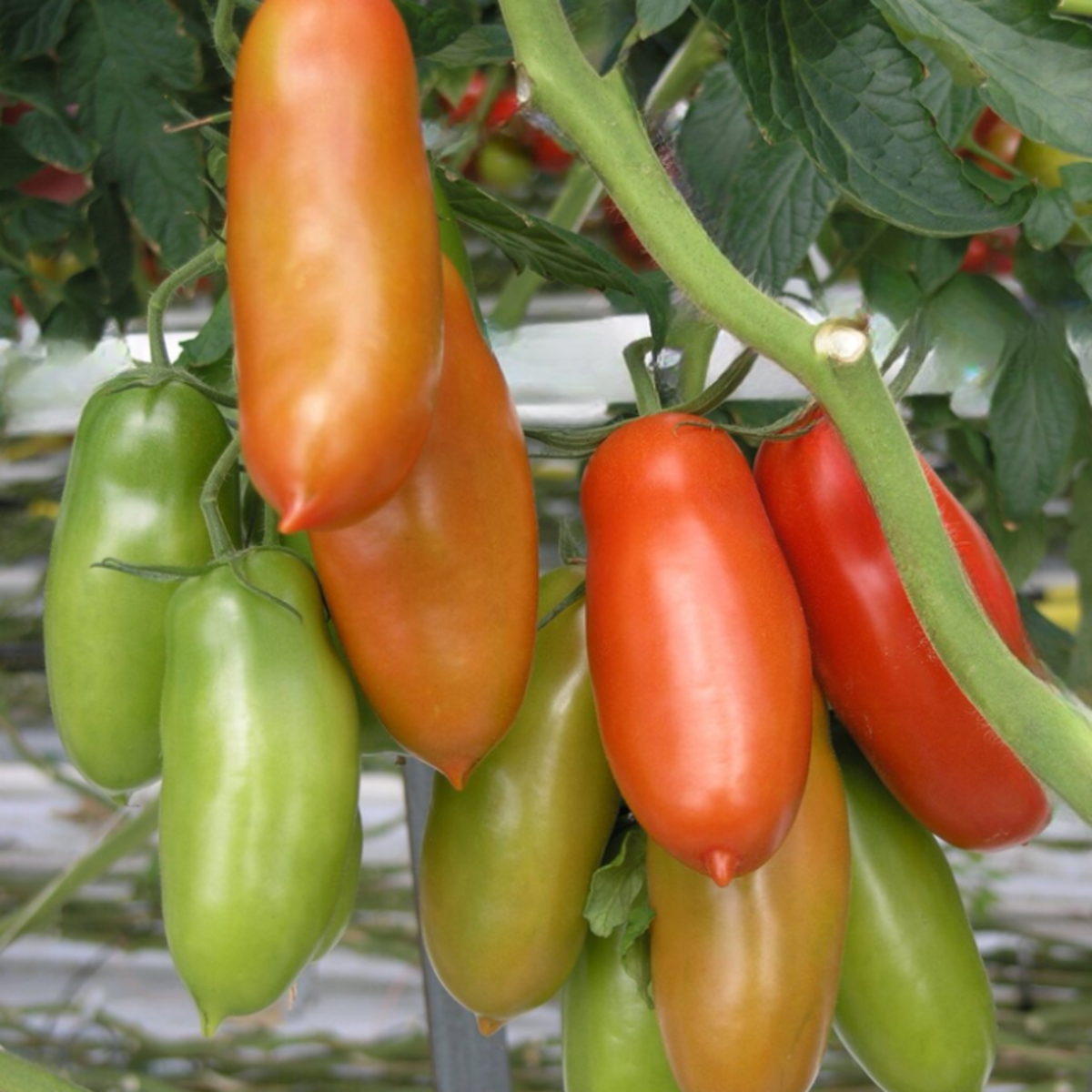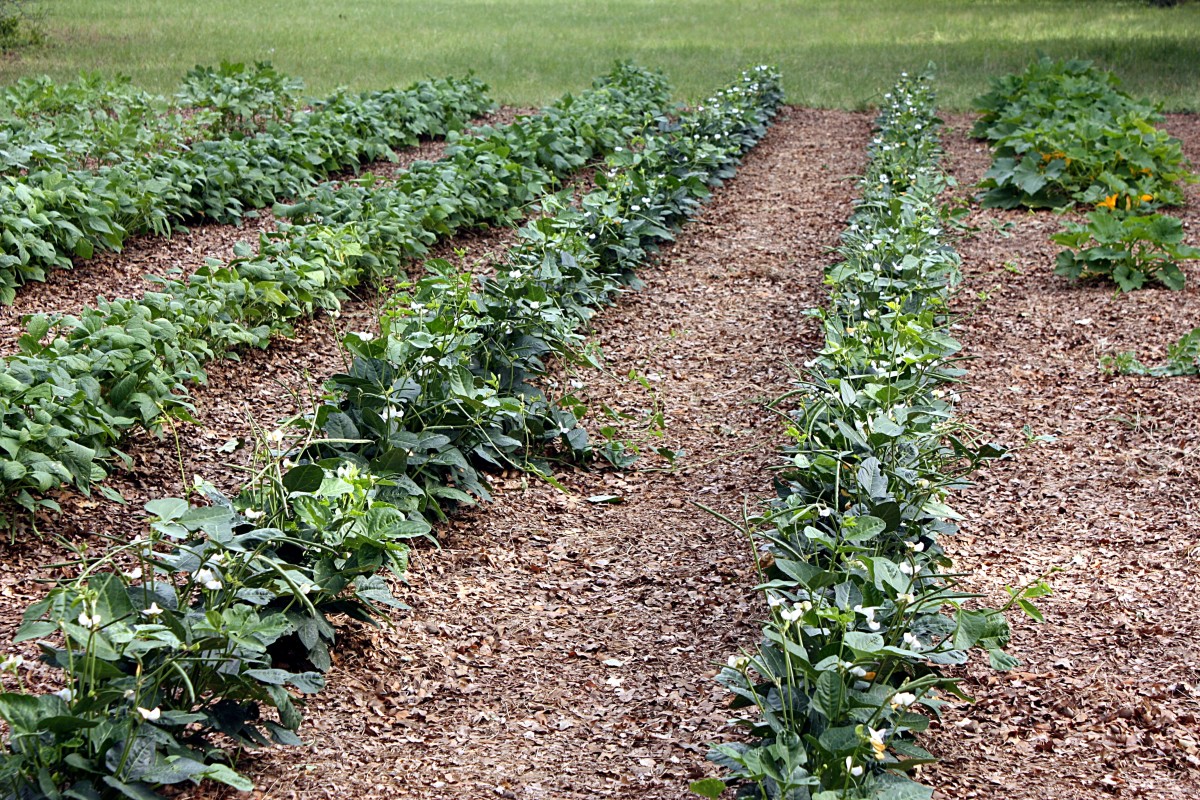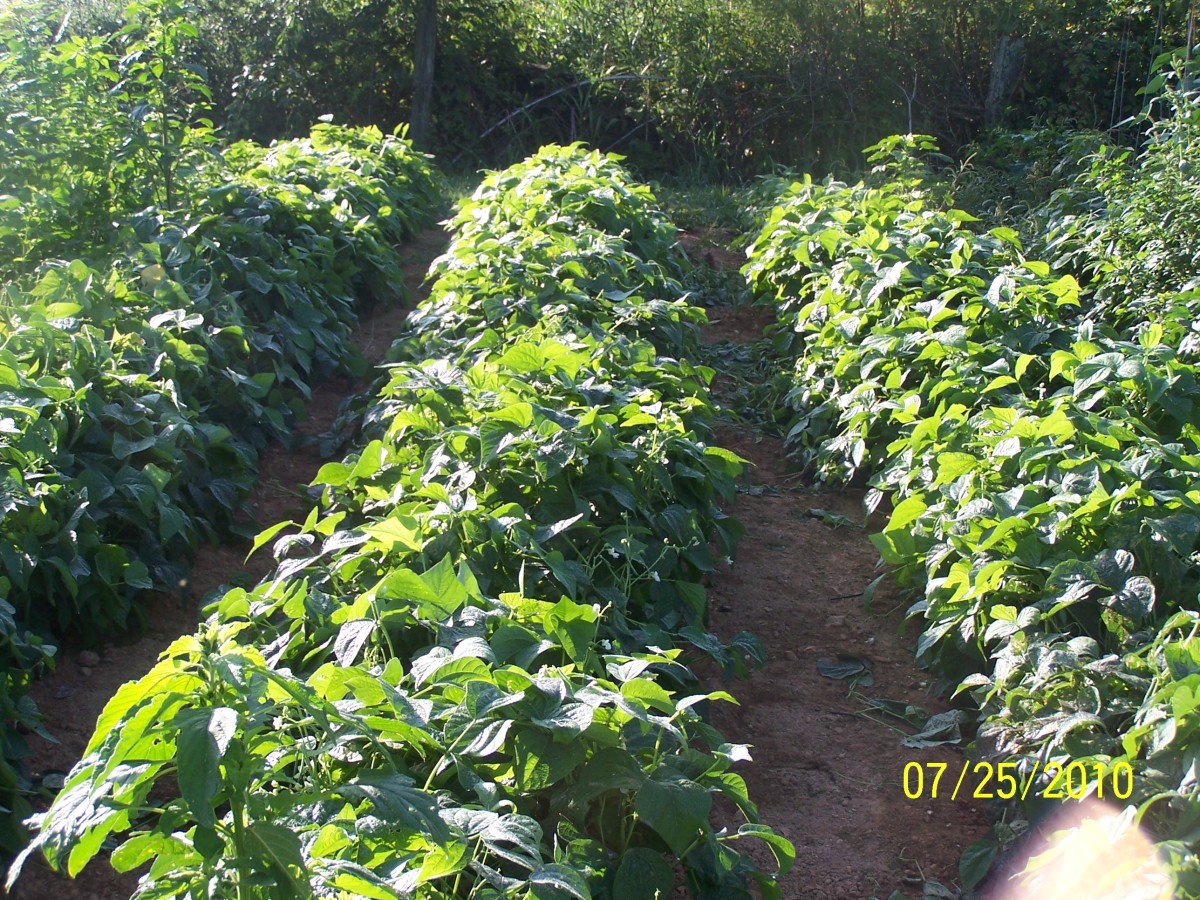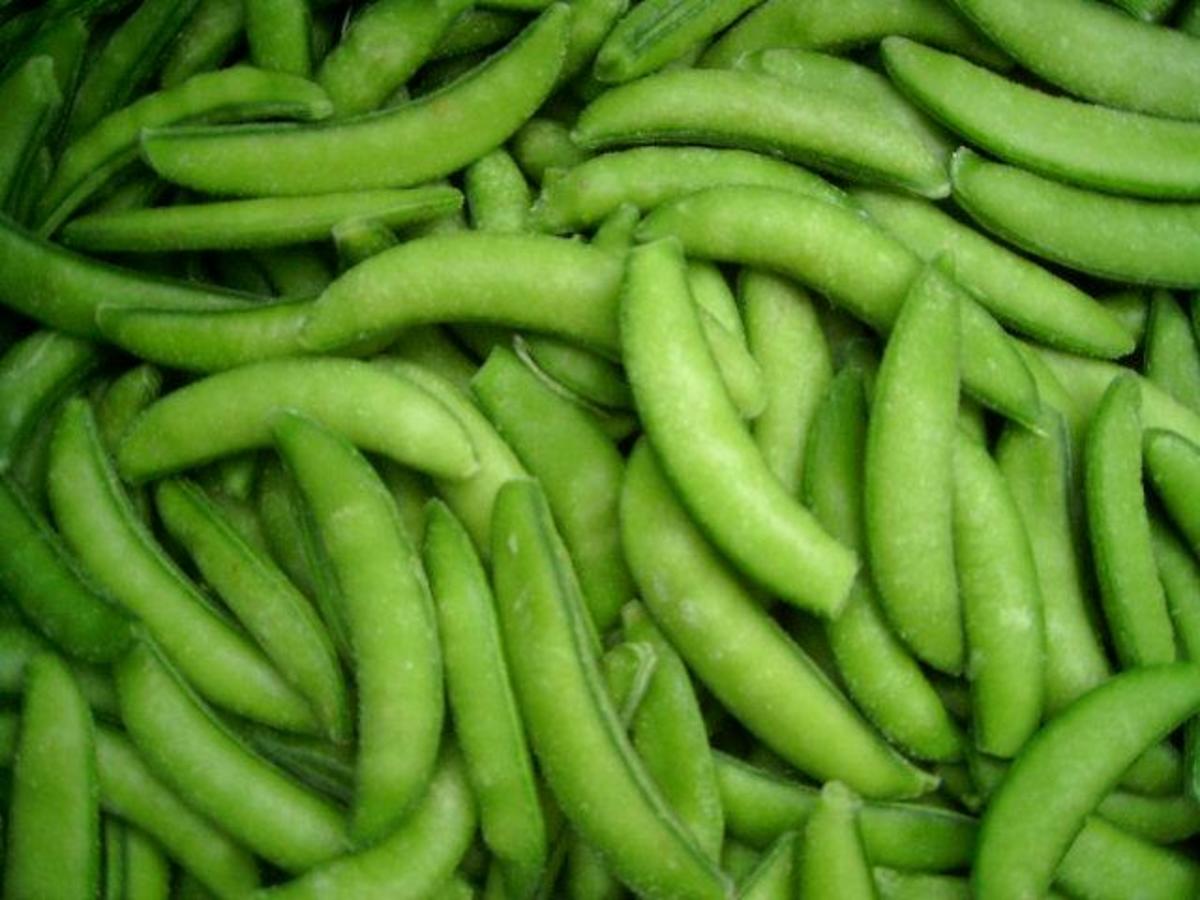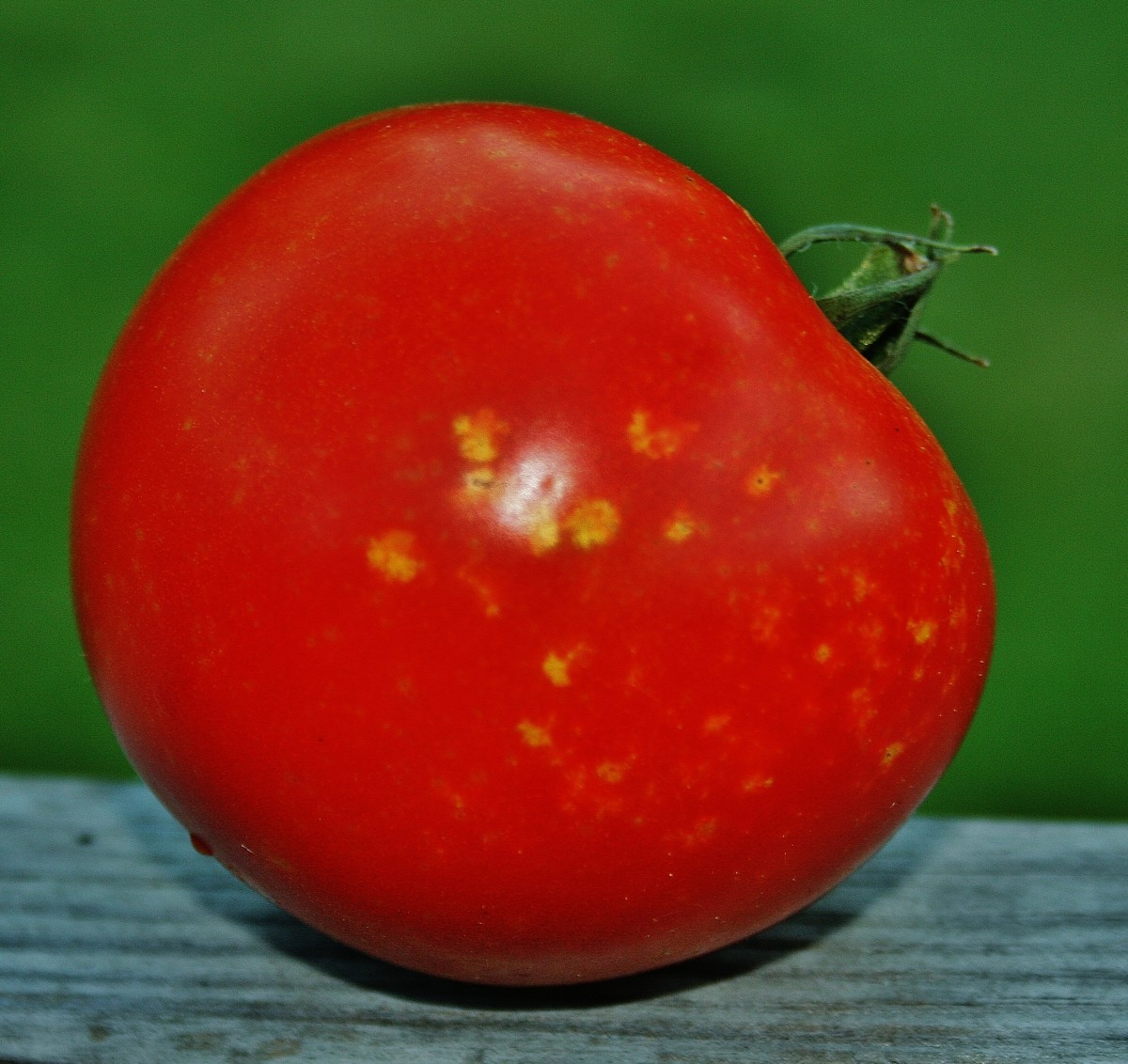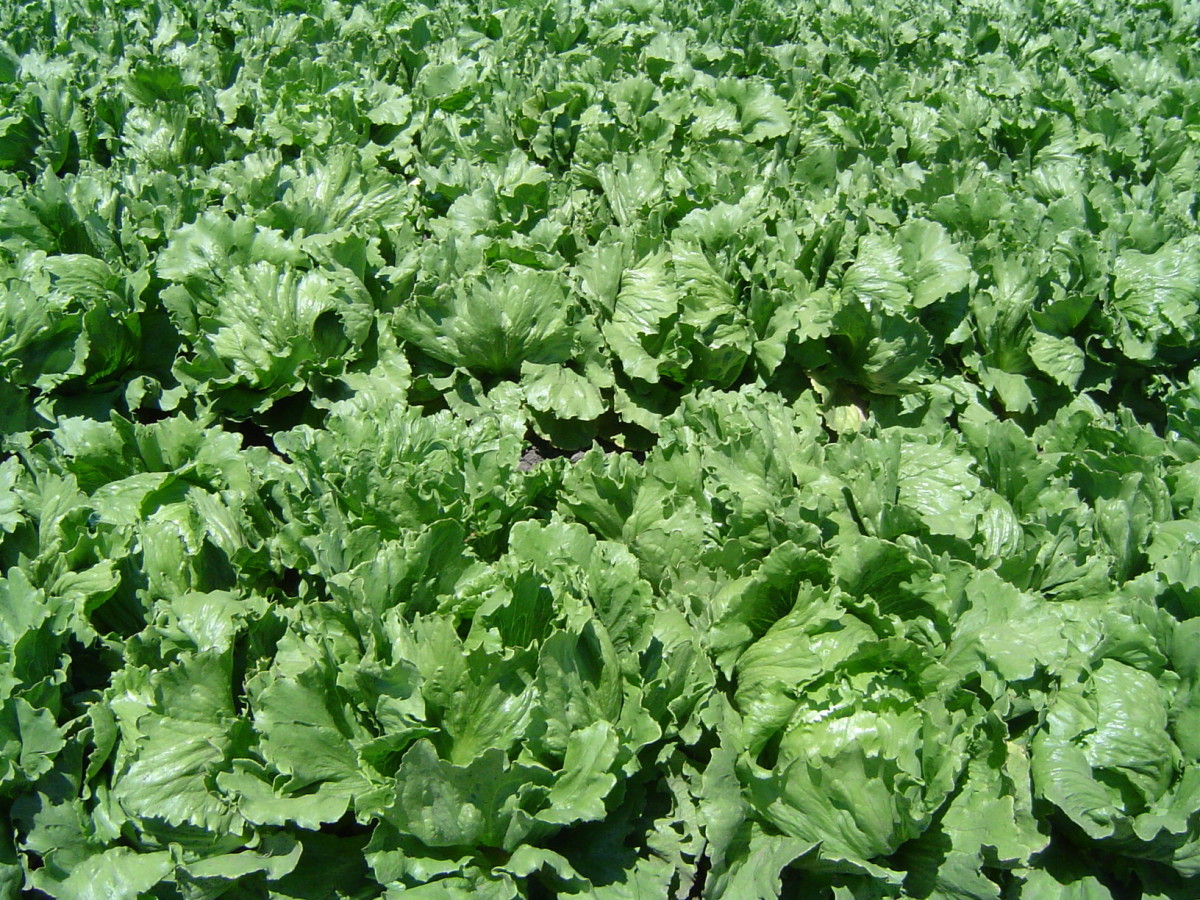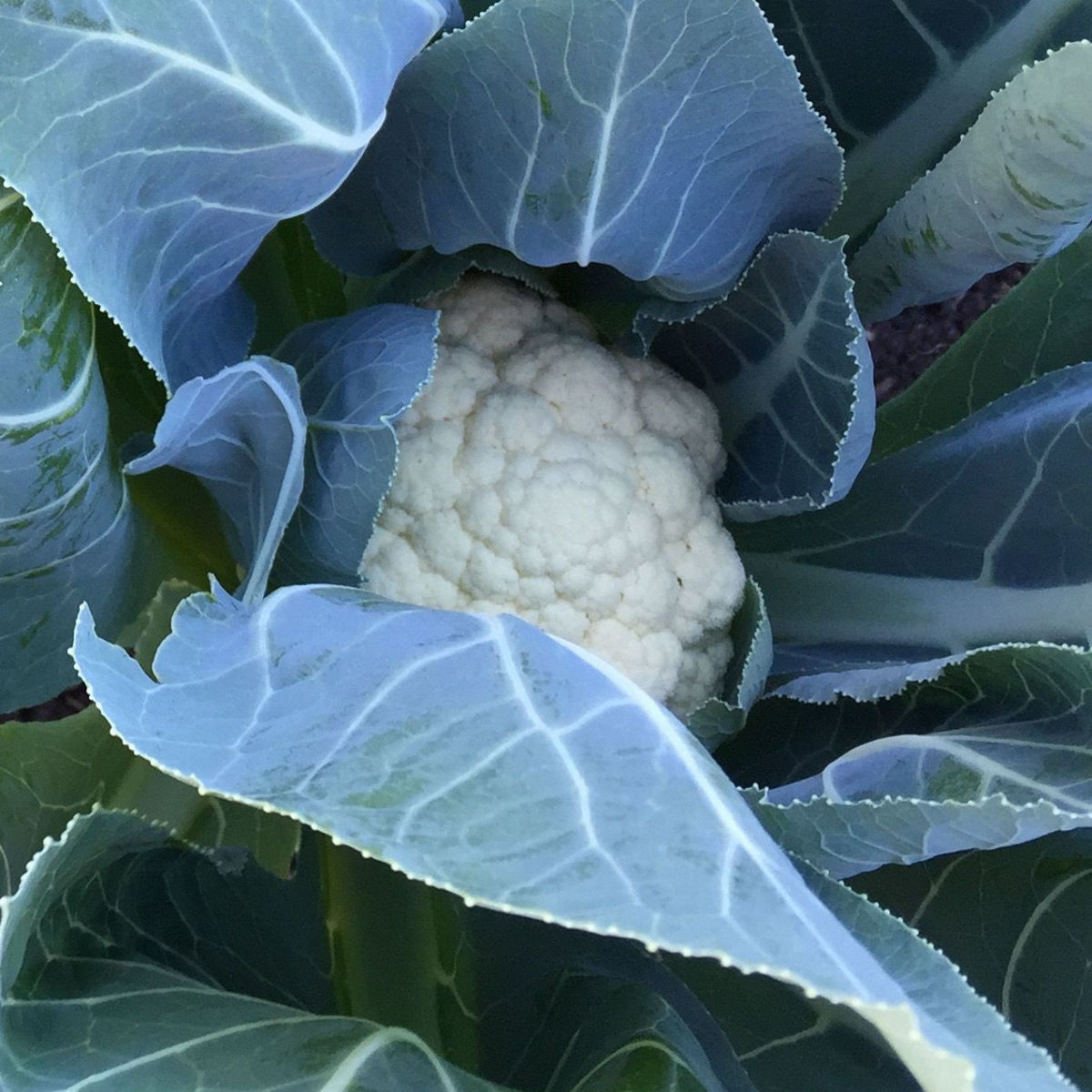5 Easy Vegetables to Grow in Your Garden
Small Vegetable Garden
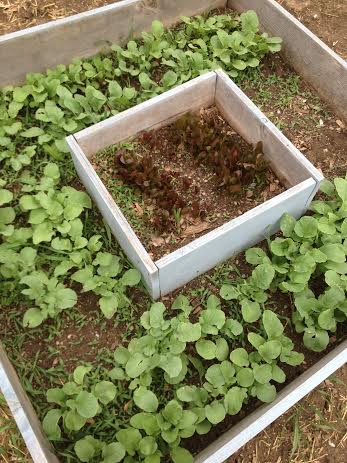
What Should You Plant in Your First Garden?
Vegetable gardening is becoming more popular for a few different reasons. Some people want to start their own garden because it can save them money at the grocery store on fresh produce through the summer months. Others like the idea of being just a little bit more self sufficient while some want to enjoy the fresh air, calmness and low impact exercise that gardening can provide. No matter what the reasoning is behind it, having your own small vegetable garden can provide you with some of the best tasting vegetables you will ever experience.
What if you are new to gardening? No one is born with the knowledge of how to grow vegetables. Some vegetables are more high maintenance than others and some take specific planning, staking, watering requirements and patience. For a beginning gardener, sorting it all out can be a but frustrating and confusing.
There are vegetables that you can grow in your garden that are lower in maintenance, easy to grow and will provide you with what you are looking for the first year, a nice harvest. Once you have mastered the art of growing these five simple vegetables, it will be time to dive into something a little more adventurous and interesting because the possibilities are endless when it comes to growing your own food in your garden.
Radishes are Quick and Easy to Grow
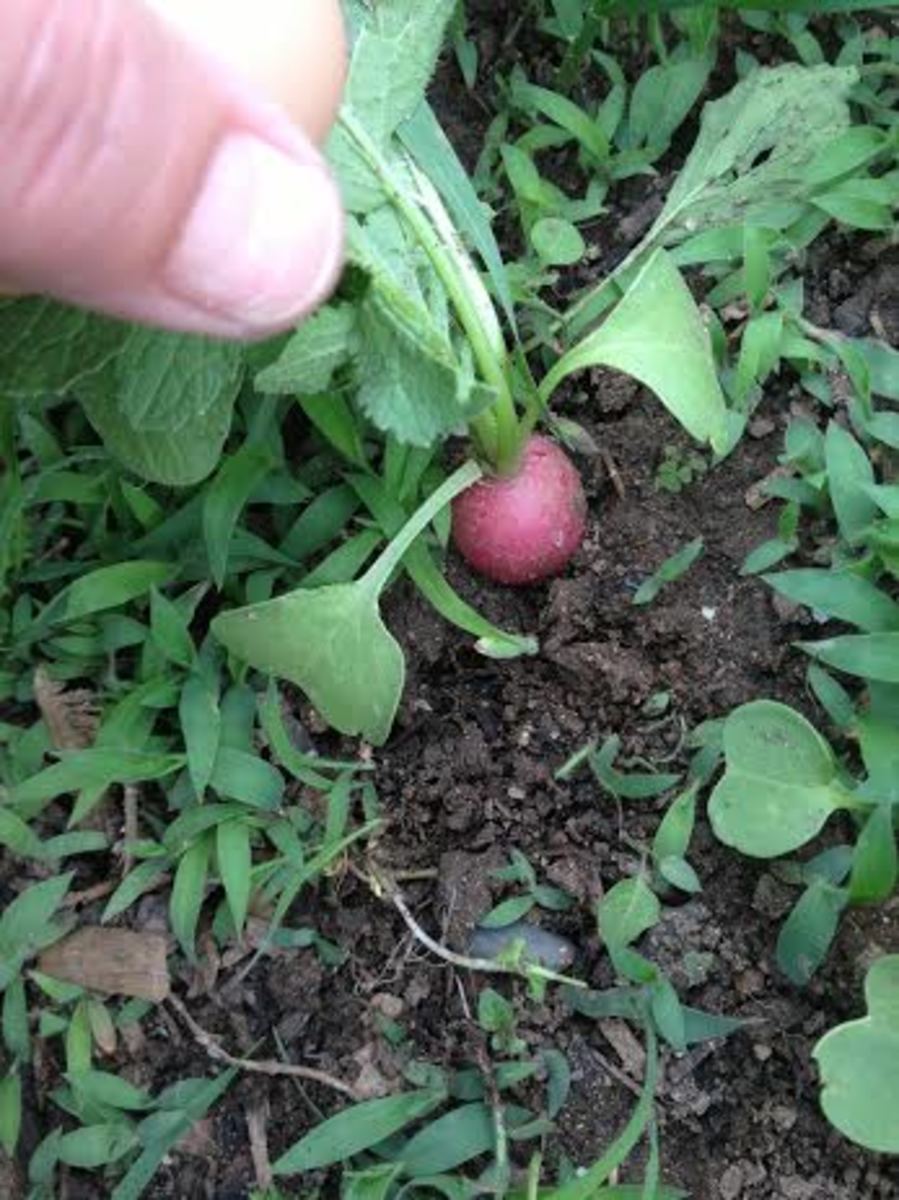
Freshly Harvested Radishes
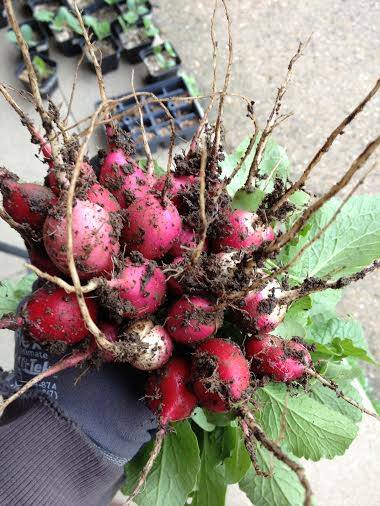
How to Grow Radishes
Radishes are an extremely easy root vegetable to grow. They are quite forgiving on things like quality of soil, the time of year that they are planted and the amount of space that they take up. They taste fantastic when they are eaten fresh out of the garden and they can be planted multiple times per year.
There are quite a few different varieties of radishes and they come in many fun colors and shapes. This root vegetable is a great example of the variety that you can get and the satisfaction that comes with it when you grow your first garden. Some of the more interesting varieties available on the market today are:
- White Icicle- A white radish that has and elongated root bulb.
- French Breakfast- This radish is white on the bottom and red on the top with an elongated root bulb.
- Watermelon Radish- Green on the outside with a red center, just like a watermelon.
- Zlata Radish- A yellow round radish.
When you are planting radishes, you will want to create a row and drop the seeds in about 1 inch apart. Cover the seeds with a very thin layer of soil and water them in.
Keep the ground moist but not overly saturated. Water them when the ground starts to look dry. You will see your seeds start to sprout anywhere from a few days to a week after planting.
Radishes are ready for harvest in between 20 and 30 days from the day your plant the seeds. Yes, they are ready to eat that quickly! They are easy to harvest, you just give the green a slight pull with your fingers right at the top of the radish.
They will survive a light frost so radishes can be planted in the early spring. You can plant them again in the early summer and then do another crop in the early fall.
These are an excellent first vegetable for the first time gardener.

Lettuce is Great for First Time Gardeners
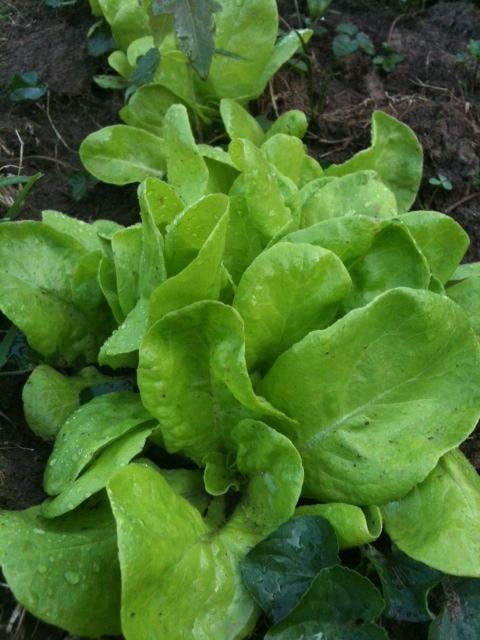
Have you ever planted your own garden before?
Growing Lettuce in the Garden
Lettuce is an extremely forgiving vegetable which makes it an excellent choice for first time gardeners. The only real requirements that this vegetable has is remembering to water it and giving it plenty of sunshine. Lettuce is great for containers in addition to being planted directly into the ground.
This vegetable is what we call a surface sow vegetable. This means that when the seeds are planted, you don't have to fully cover them with dirt. If you have ever planted grass seed, that is comparable to planting lettuce. You just sprinkle them over the surface of your container or scratch a shallow line in the dirt in the garden and sprinkle the seeds in the line. Be sure to water thoroughly once you have put the seeds down to keep the seeds from blowing away in the breeze.
There are many types of lettuce that are available for you to try to they are all easy to grow. The only extra thing that you would need to do would be to thin out the seedlings if you choose to grow iceberg lettuce. Iceberg lettuce is the common head lettuce that you see for sale in your local grocery store. It is also the least nutrient dense of all of the lettuce varieties that are available to grow in your home garden. I only plant it because it is the only type of lettuce that my husband will eat.
Some of the varieties that I always suggest for new gardeners to try are:
- Butterhead- A lightly headed lettuce that is light green in color, very tender and flavorful.
- Red Romaine- A crimson colored leaf lettuce. When picked young, it is tender and only slightly bitter but as the plants grow older, the bitterness increases and the leaves have more substance to them.
- A Salad Blend- Many seed manufacturers have a blend of lettuce available in a packet so you can try many types at once. This is great for someone who likes a variety of lettuce types in their salads. The packet will list the varieties included inside.
You can grow different types of lettuce together in a row in the garden or in a container. Mixing the types together makes harvest extremely easy. You just walk out to where your lettuce is growing and cut the quantity that you want because the mixing has already be done for you.
Lettuce can be planted many times over the growing season starting in the early spring. The plants love the sun but may start to become a bit bitter in the heat of the summer, depending on your growing zone. Staggering the planting about 2 to 4 weeks apart will provide you with lettuce for the entire growing season into fall. Lettuce will continue to produce until it is touched by the first hard frost.

Sweet Corn
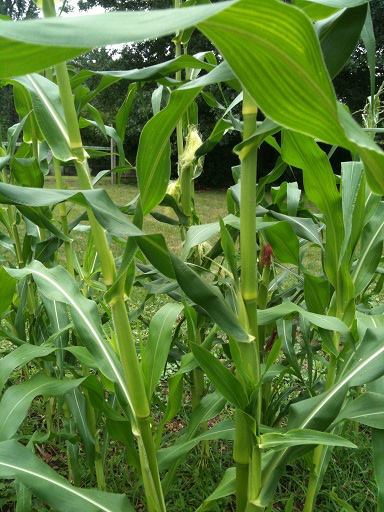
Corn in a Backyard Garden
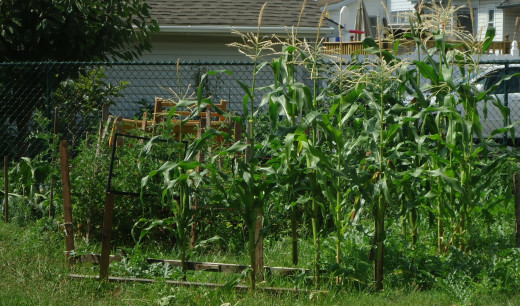
How to Grow Corn
Corn is a lot easier to grow that what you may think. A lot of people are intimidated by these tall majestic stalks but if you remember a few simple rules when planting corn, a first time gardener will be able to easily harvest a nice crop of their own home grown fresh sweet corn.
Things to remember when you are planting corn:
- You need at least 6 rows or more. This is because of the way corn pollinates itself. If you only have a small number of rows, your ears will only have kernels on one side.
- Sweet corn and field corn are two completely different types of corn. The corn you see growing in a large farmer's field is not the same kind of corn that you buy at the store of want to grow in your garden. Field corn is lower in sugar content and is grown for animal feed. It is also more than likely genetically modified (GMO) corn.
- You can also choose to grow popcorn! Popcorn is another choice that you have instead of sweet corn. It is grown exactly the same way.
When you are looking for a good place to plant corn in your garden, you'll want to choose a sunny location that is large enough to hold your six rows. Dig a shallow trench for each row, approximately 1/2 to 1 inch deep. Drop the seed in approximately 1 foot from each other then cover the seed with dirt and water. You should see your plants sprouting in less than three weeks.
You will want to make sure that your corn is planted early in the spring so there is ample time for the ears to ripen before harvest. Corn can only be planted once a year in the majority of the growing zones, unless you live in a tropical area.
There are many different types of corn to choose from but here are some that I have planted and had excellent luck with:
- Bantam Sweet Corn- This variety is becoming scarce as a non-GMO corn and is sometimes for sale by Baker Creek Seed Company. It grows well with large, sweet ears that can and freeze well for storage. Each stalk produced two ears and almost half actually produced three.
- Stowell's Evergreen Sweet Corn- One of the oldest varieties of sweet corn that is unaltered on the market today. This corn produced two ears per stalk and can actually be stored for a few months without having to be canned or frozen.
- Strawberry Popcorn- If you are wanting to grow popcorn, I highly suggest this variety. It produces a smaller ear of reddish color kernels that can be made into popcorn once the ears are completely dried. It is a really interesting variety of popcorn to grow and is a lot of fun to show to your friends and family.
Corn is a fantastic addition to any garden and a lot easier to grow than you may think.

Green Beans on the Bush
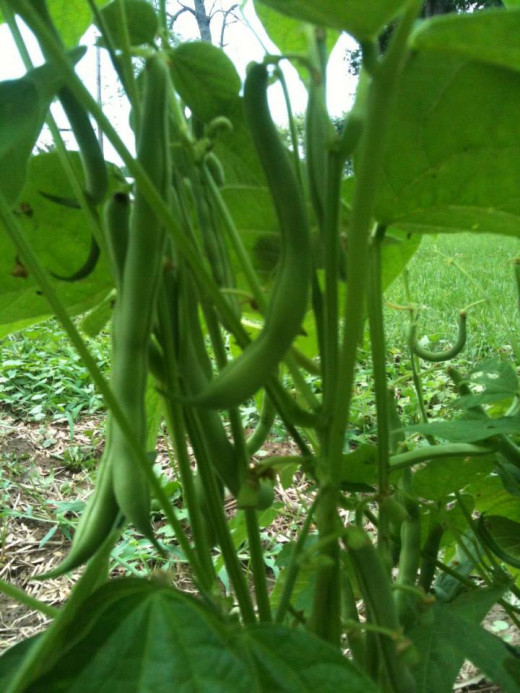
Green Beans, Information and How to Grow Beans in Your Garden
Green beans are a basic vegetable for growing in the garden. They are nutritious, flavorful and almost everyone has tasted one at some point in their life. There are two varieties of green beans, pole and bush varieties. I always suggest the bush variety for the first time gardener because you don't have to build any type of support system for the beans to grow.
There are a few types of bush green beans that I have grown in my garden that I always suggest for first time gardeners.
- Blue Lake- Blue Lake is the only variety of green bean that has been genetically modified so if this is something that concerns you, be sure to check with the seed producer or look for an organic version of this bean. This is the variety of green bean that is commercially canned and frozen for the grocery store shelf because it holds up to storage.
- Calima Bean- This bush style green bean has a skinnier type pod and is sometimes referred to as a french style green bean. It is tender and has a nice flavor.
- Contender Green Bean- A bush style green bean that starts producing earlier than other types of bush green beans.
Green beans are extremely easy to plant and maintain. As long as you keep them watered and plant them in an area with plenty of sun, you will have a great harvest of green beans for eating fresh or preserving for later use. Any of the varieties that I have mentioned above are easy to grow and you'll be surprised at the results.
To prepare your rows for planting, you will want to dig a trench that is approximately 1/2" deep. Drop your seeds in leaving approximately 8" of space between each seed. Cover the seeds with dirt and water them in. You should start to see your baby green bean plants popping up through the soil in 21 days or less.
You will get the heaviest harvest the first time the plants produce. They will continue to produce green beans until they are touched by frost in the fall. If you want to extend the heavy harvest, you can do a second plating when you see the new seedlings from the first planting peeking through the soil.

Tomatoes are a Popular Garden Plant
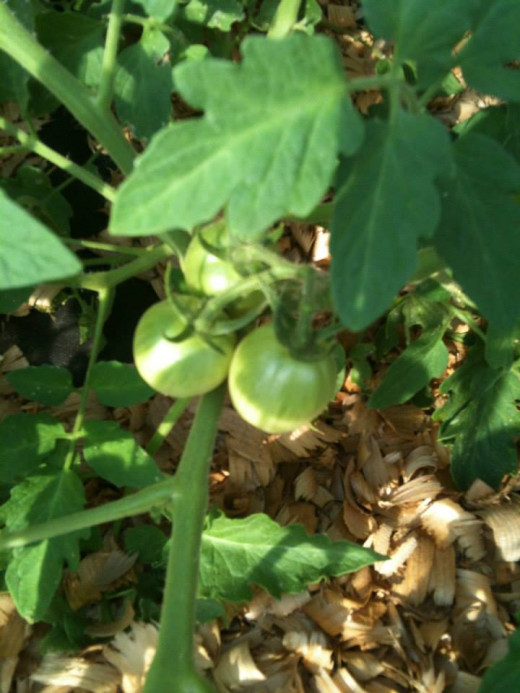
Tomatoes Come in Many Colors
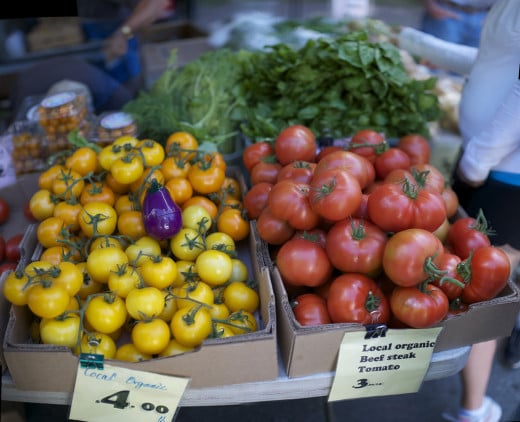
How to Grow Tomatoes
I know that technically a tomato is a fruit but I decided to include it here because it is so easy to grow. Tomatoes are one of the most popular plants in the garden and it is rare to see a garden without at least a few beautiful, stately tomato plants. Tomatoes are usable in so many different culinary dishes and can be quickly made into a base for a nice soup. They also can well and are one of the few things that will come out of your garden that can be waterbath canned by simply upping the acid content with a bit of lemon juice.
Tomatoes come is so many different varieties, sizes and colors. From smallest to largest, tomatoes come in cherry, regular and what is referred to as beefsteak sizes. Planting a variety of sizes and colors can give the new gardener a cornucopia of tomato flavors, textures and uses. Be careful though because I'm here to warn you that when you start plating different varieties of tomatoes, it becomes a bit addicting and before you know it you have twenty different tomato plants growing in your garden with no room for anything else!
Some of my favorite varieties that I have grown in my garden over the years are:
- Cherokee Purple- Just as the name suggests, this is a dark purple tomato that can sometimes have a black hue. The fruit of this tomato is average size. It is flavorful but not overly juicy.
- Roma- This is the tomato to grow if you are wanting to make tomato paste or tomato sauce. This tomato is larger than a cherry, slightly egg shaped and red in color. It is a beautiful tomato for a cooking garden.
- Sweet Cherry- This tomato variety produces small, sweet red tomatoes that are great for salads and omelets.
- Lemon Boy- A yellow tomato that is average size. This tomato is sweet, juicy and excellent for salsa and eating on sandwiches.
- Yellow Brandywine- This is actually an orange colored tomato that is a large, beefsteak size. It is very juicy and great for an interesting addition to tomato sauce and salsa.
Tomatoes can be started from seed but I don't suggest seed starting for the first time gardener unless there is a source for plants available as a back up. Seeds should be started weeks before the plants are to be transplanted outside and then they have to go through a hardening process to become accustomed to being outdoors. This process takes a few years to master so if you are a first time gardener and you try this, be patient and keep trying until you get the hang of it.
Plating tomato plants is one of the easiest things to do in your garden. Tomato plants are very forgiving, you just need to make sure to give them plenty of water after they are in the ground. Once the plants start to grow and before they become too large, you will want to stake or cage them for support and to keep the fruit off of the ground.
Watering tomato plants is best done during the very early morning or late afternoon. Never water them at night and try to keep the water off of the leaves as much as possible. Tomato plants can be prone to mold and blight if the leaves are left damp after the sun goes down.
Once you have enjoyed your first bumper crop of tomatoes, you will be hooked. There are few things in this world that taste like summer than picking a tomato fresh from the vine and being able to bite into that sweet juiciness. It is a little bit of heaven right here on Earth.

Excellent Tips for First Time Gardeners
© 2014 Helena Hasquin

